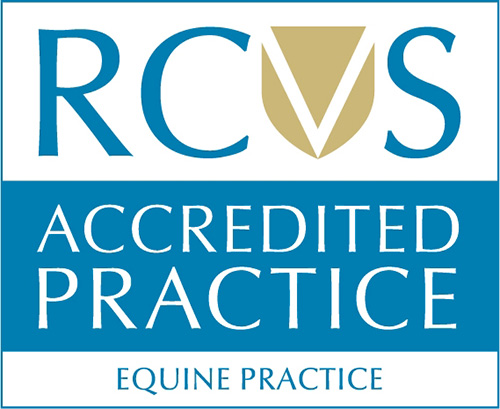Equine Grass Sickness
Equine grass sickness (EGS) is a disease of the nerves that coordinate intestinal movement, which causes the digestive system to stop functioning properly.
What is the cause of EGS?
For many years the cause of the disease was unknown, but it is now thought that toxins released from the bacteria Clostridium Botulinum cause the disease. The signs of the disease shown by horses with EGS reflect the damage to the nervous system.
Grass sickness occurs in several different forms, ranging from acute to chronic:
- Acute - The sudden on-set EGS form of the disease is characterised by signs of colic. In fact, it is sometimes very difficult to differentiate this cause of colic from the many other types of intestinal problems that are classed as 'colic'.
- Sub-Acute - Signs of sub-acute EGS are similar but less severe. Sadly, recovery from the acute form is impossible, but we do work to do all we can to confirm the diagnosis as accurately and rapidly as possible.
- Chronic - The chronic form of grass sickness, which accounts for around a third of EGS cases, has more of a gradual onset of clinical signs. Most notable is rapid weight loss, while a 'tucked up' abdominal appearance and abnormal stance may develop. Horses affected by this slower onset (chronic) form of the disease become very depressed and have difficulty eating food.
The only treatment for chronic EGS is intensive nursing. This sort of intensive care may be prolonged and costly but can have survival rates that range from 36-70%. The majority of recovered cases return to their previous level of work.
How do I manage and prevent EGS?
This advice is particularly relevant to the owners of horses on 'high risk' premises, i.e. premises that have recently had a case of EGS.
- Avoid grazing young horses (less than 7 years old) on high-risk premises if possible. Young horses are most at risk from EGS. Older horses are less likely to suffer from the disease.
- Avoid changes in management during the high-risk Spring period (April - June). This includes moving horses to different pastures, buying new horses from other areas and changes in diet. Recent change in diet is one of the biggest factors for EGS.
- Supplement the diet of horses 'at risk' with extra hay or haylage throughout the spring.
- Avoid digging up or otherwise disturbing the soil. Do not dig holes for fence posts, trenches for drains or foundations for buildings in the pastures of grazing horses. Mechanical removal of droppings is also best avoided.
- Avoid the intensive use of worming drugs in the months leading up to the high-risk spring period. Worm control is obviously important, but the over-use of worming drugs may increase the risk of EGS. Talk to one of our vets about getting the balance right.
- Don't worry about ploughing and re-seeding pasture or about the use of nitrogen fertilisers. Neither of these have been demonstrated to change the risk of contracting EGS.
Equine Grass Sickness shows marked clustering in time and space. In other words, when a horse on a particular premises is diagnosed with the disease, there is an increased risk of other horses nearby also suffering from the disease for a period of approximately one month. The radius of increased risk is at least 10km but there is likely to be a gradient of risk; risk is highest on the affected premises and decreases with distance from those premises.
Until the exact cause is known, it is difficult to give sound advice regarding prevention. In areas where the disease is prevalent, stabling the animals during the spring and early summer will reduce the likelihood of disease. Following the discovery of an association with weather, some owners living in affected areas now stable their horses when dry weather with a temperature of 7-11°C has persisted for 10 consecutive days. Stabling is particularly advisable for a new horse that has been moved onto premises where the disease is known to occur. If certain fields are “bad” for the disease, they can be grazed by other stock, especially in spring and summer.
If a case occurs amongst a group of horses, it is probably best to move the others out of that field, provided this does not involve too much stress associated with transportation or mixing with strange horses. If horses cannot be moved from the pasture, then supplementary feeding with hay, haylage or hard feed may reduce the amount of grass the horses eat. It has been suggested that feeding haylage to grazing horses may have a protective effect.
Finally, please watch out for laminitis, which is the other disease we see too much of in our horses and ponies turned out on the Spring grass in the early part of the year.
To view/download a copy of this information in PDF format, please click here.
-
Previous
-
Next

